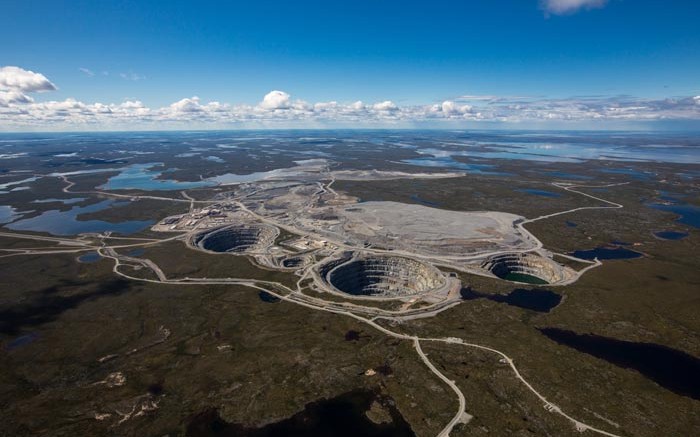The long-term outlook for the diamond market is positive — with demand expected to outpace supply starting in 2019 — but in the short-term, the outlook remains challenging, the Antwerp World Diamond Centre and Bain & Co. state in their annual report on the industry.
A “mild decline” this year in consumer demand for diamond jewellery in Greater China led to a drop in demand for polished and rough diamonds, which caused prices for polished and rough diamonds to fall 12% and 23% since May 2014, and 8% and 15% since the start of 2015.
“Despite a generally solid performance in 2014, the second half of that year and the first half of 2015 have been characterized by a degree of uncertainty in the diamond industry,” the report says. “The primary source of this uncertainty is China’s slowing GDP growth.”
In the first nine months of 2015, diamond jewellery retailers in Greater China posted a 9% year-on-year drop in sales, driven in part by the depreciation of the Chinese yuan, which took a toll on spending, and the June stock market crash, which took a toll on consumer confidence, the report states. Tourist numbers in Hong Kong and Macau were also low, with some of the traffic diverting to Europe and Japan.
Challenges facing the industry include boosting demand for diamonds from sources other than jewellery, combating undisclosed synthetic diamonds and sustaining long-term demand in developed markets, and among a new generation of consumers. “Little is known of the diamond consumption patterns of a new generation of consumers,” the report states. In addition, according to separate studies by Bain, “luxury items are forfeiting their aspirational and status appeal in developed markets.”
One priority for the industry next year will be to “restore the mid-market segment’s profitability,” which declined in 2014 and 2015 because of deteriorating demand for polished diamonds and excess inventories in the middle segment. Scarcer financing for the mid-market segment “compelled the most troubled players to unload inventory at lower prices, further pushing down the prices of polished stones,” the report states, and by the second half of 2014, “major producers were reducing rough pricing in reaction to weaker demand from the middle market.”
The top-five rough producers Petra Diamonds (LSE: PDL), Dominion Diamond (TSX: DDC; NYSE: DDC), Rio Tinto (NYSE: RIO; LSE: RIO), De Beers and Alrosa kept their 2013 production levels in 2014 and 2015. Revenue for rough diamond producers as a whole, however, is expected to decline between 15% and 20% this year.
Accumulated jewellery stocks and reduced demand for polished diamonds, meanwhile, ate away at the cutting and polishing industry, forcing many players out of the market. The report estimates that the average operating margin in 2015 deteriorated to close to zero, with some participants suffering operating losses of 5% or more.
“The coming years may see significant consolidation and operational efficiencies,” the study warns, noting that the most cost-efficient countries (India and China) gained market share in value terms, while higher-cost countries that focus on better-quality stones (Belgium, Israel and the U.S.), posted declines in polished revenues “as volumes of large stones migrated to India.” (India now cuts and polishes more than 40% of diamonds that are bigger than 1 carat.)
The report also states that diamond recycling won’t have an impact on demand in the near future, although it could become a bigger factor in the longer term.
In terms of industry fundamentals, the report estimates that demand for rough diamonds over the next 15 years will grow at an average rate of 3–4% a year, with supply declining 1–2%, creating a gap starting by 2019. New mines could add up to 20 million carats a year until 2021, before decreasing to 5 million carats by 2030.





Be the first to comment on "Short-term challenges remain for diamond sector"